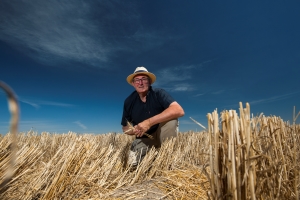
Growers who cut crops for hay should consider the effect hay production can have on nutrient removal and next season’s nutrient budget allowance.
Compared to grain production, hay cutting typically increases nutrients taken from the paddock due to the removal of stubble straw that would usually be recycled into the soil following a grain harvest.
In a new , Norton Agronomic director and crop nutrition specialist Rob Norton discusses this very topic, explaining that even a basic nutrient replacement strategy will need to change following hay cutting.
Dr Norton says soil testing to measure nutrient levels is important following hay cutting because hay contains greater concentrations of some nutrients than grain, and the quantities removed are also greater.
“Soil testing allows growers to understand where they are in terms of building, maintaining or running down their nutrient levels,” he says.
“Removing the above ground parts of a cereal crop for hay typically takes up to three times more nitrogen than just grain removal. It also removes up to 10 times more potassium and about five times more sulfur than if the crop was harvested for grain.
“The breakdown of the stubble straw usually recycles these nutrients back into the soil, so while cutting a droughted or frosted crop for hay may make immediate financial sense, the soil is missing out on that nutrient recycling and the subsequent nutrient budget may need increasing.”
Dr Norton says testing hay for feed quality is an important consideration if growers plan to sell it for alternative income.
“This will allow growers to understand their marketing options and how much their soil nutrient levels could be impacted,” he says.
“The hardest thing to do when looking at a hay production is working out the nutrient levels within the hay, as this does vary.”
Dr Norton advises growers to seek advice from agronomists and resources such as the .
In addition to adjusting future nutrient budgets, growers are also urged to be aware of increased risks of soil erosion due to reduced ground cover following hay cutting.






